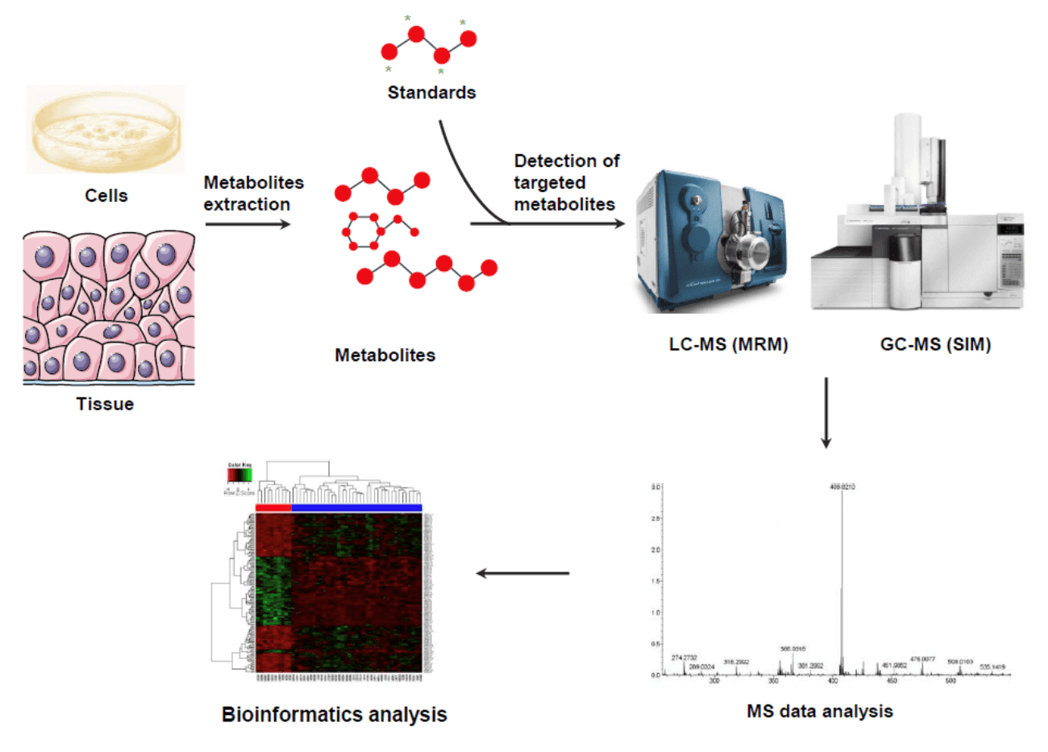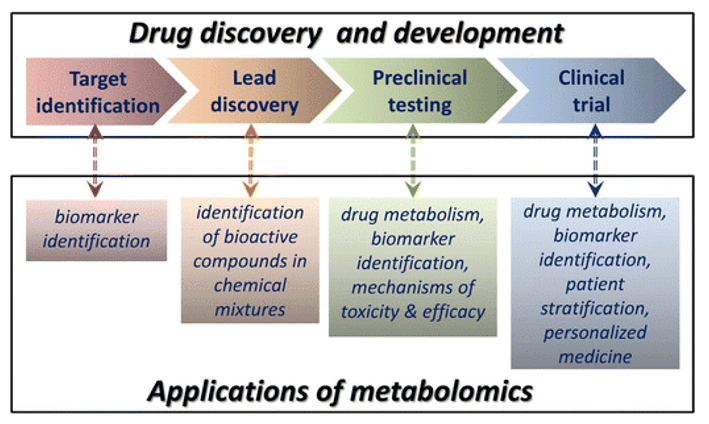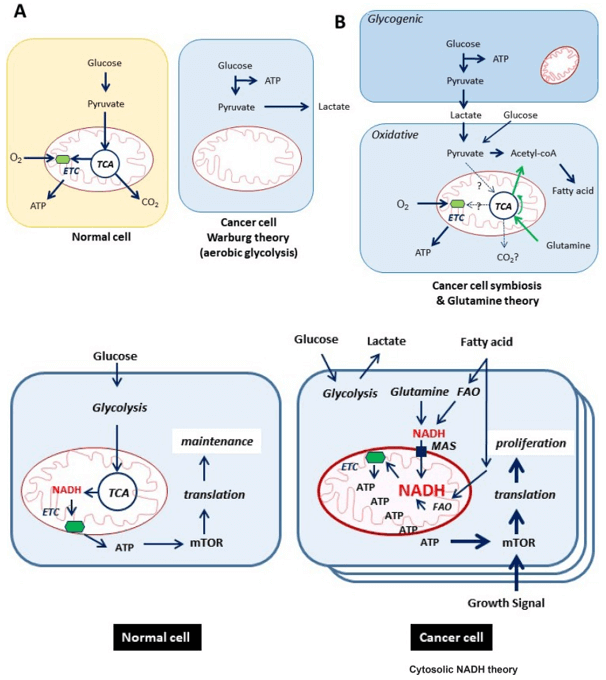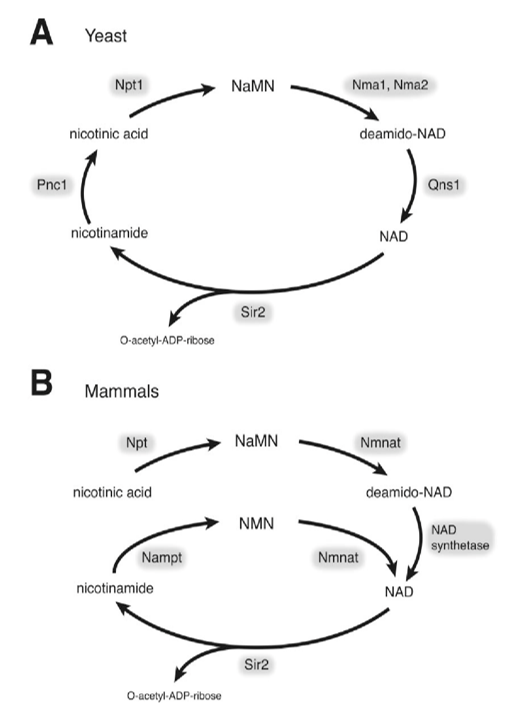Overview
Human and animal target metabolomics aims at measuring previously defined groups of metabolites from cells, tissues, and biofluids using advanced analytical chemistry techniques. With the ability of rapidly detecting and quantifying hundreds or even thousands of metabolites within a single sample, it can help researchers paint a far more comprehensive picture of system-wide metabolism and biology. Therefore, targeted metabolomics methods are important for studying the biological function and comparing the metabolic systems in animals. Generally, the workflow of targeted metabolomics service including sample preparation, metabolites extraction, metabolites purification, MS analysis, data curation, and systematic bioinformatics analysis.
Creative Proteomics provides high-throughput bioanalytical approaches based on mass spectrometry (MS), high-performance liquid-phase chromatography (HPLC), and nuclear magnetic resonance (NMR), which can measure a large number of metabolites in many different samples. With the advantages of our optimized protocols, we guarantee accurate analysis of targeted metabolites, even in low abundance.
Advantages of Our Human and Animal Targeted Metabolomics Service
Optimized protocols ensuring accuracy and success.
Metabolomics assays allowing high throughput measuring.
Comprehensive analytical portfolio for diverse research questions.
Established institutional knowledge for state-of-the-art interpretation of results.
Assistance in the design of metabolomics studies.
Service Workflow
Our service workflow covers the entire process, from sample shipment to data analysis.

How to chose analytical platforms?
| Analytical platforms |
Advantages |
Disadvantages |
| Nuclear magnetic resonance (NMR) spectroscopy |
- universal detection
- excellent quantitative precision
- high throughput (> 100 samples/day)
- rigorous structural analysis of many metabolites in crude extracts, cell suspensions, intact tissues, or whole organisms
- structural determinations including the atomic positions of isotopic labels (e.g., 13C, 15N, or 2H) generated during stable isotope tracer studies
- speed
- detection of unidentified metabolites
|
- relatively poor sensitivity
- high initial cost of NMR; instruments (over one million dollars)
|
| Mass spectroscopy (MS) |
- most important technique for known metabolite identification
- high sensitivity for low abundance signals
- detection of molecules that are not yet identified
|
|
| Gas chromatography–mass spectroscopy (GC–MS) |
- structural information
- quantitative precision
- high throughput
- higher sensitivity compared to NMR
- excellent tool for targeted studies
|
- inability to study molecules that cannot be readily volatilized
- low mass accuracy
- increased mass accuracy is associated with higher initial cost and reduced throughput
|
| Liquid chromatography-mass spectroscopy (LC-MS) |
- measures metabolites without derivatization
- could be tailored for specific class of compounds
- detection of broad range of compounds
- stable isotope/flux experiments
- excellent tool for broad non-targeted studies
- detection of unidentified metabolites with the exact mass immediately known
|
- lack of consistent quantitative precision
|
| Liquid chromatography–electrochemistry array (LCECA) |
- small molecule detection based on oxidation/reduction
- high reproducibility
- high sensitivity
|
- lack of structural information
- low throughput
|
List of Human and Animal Targeted Metabolites Analysis Services
Sample Requirements
- Cells and microbes samples: cellular activities should be terminated instantly, whereas maintaining the cell integrity.
- Human and animal body fluids samples: such as urine, blood, saliva, etc. Samples must be added with anticoagulant and preservative reagents right after sample collection, followed by freezing at -80℃.
- Serum samples: Repeated freezing and thawing of sample must be eliminated. Serum samples should be settled down at room temperature for 30 min in the collection tube, and then transferred to centrifuge tube and centrifuged at 8,000 rpm, 5 min. After centrifugation, supernatant is aliquoted to freezing tubes with 500 uL/sample, and stored at -80℃.
- Urine samples: 1 mL/sample. Urine samples can be aliquoted to centrifuge tubes with 1mL each tube, with addition 1/100 (w/v) sodium azide, and stored at -80℃.
- Faeces samples: 10 mg/sample.
Delivery
- Experimental procedures
- Parameters of liquid chromatography and MS spectrometer
- Extracted mitochondria and purified protein sample
- Purity analysis report
- MS raw data files and MS data quality checks
- Metabolites quantification data
- Bioinformatics analysis report (PCA, KEGG, etc.)
Our metabolic services enable a quality-controlled, highly reproducible, quantitative analysis across the metabolic spectrum. The expert services offer full support in every step of your project, including sampling and sample shipment, project management, statistical analysis, and biomedical data interpretation. please do not hesitate to contact us to see if we can meet your specific project requirements, from sample to bioinformatics.
Application
- Biomarker screening and identification
- Human and animal sample metabolite detection and analysis
- Veterinary medicine
- High throughput phenotyping
- Human and animal breeding
- MS raw data files and MS data quality checks
- Network reconstruction of complex metabolomics
References
- Fontanesi L. Metabolomics and livestock genomics: Insights into a phenotyping frontier and its applications in animal breeding. 2016. Doi: org/10.2527/af.2016-0011.
- Goldansaz SA, Guo AC, Sajed T, et al. Livestock metabolomics and the livestock metabolome: A systematic review. 2017. Doi: 10.1371/journal.pone.0177675.
- Trushina E, Mielke MM. Recent advances in the application of metabolomics to Alzheimer’s Disease. 2014. Doi: org/10.1016/j.bbadis.2013.06.014.
For Research Use Only. Not for use in diagnostic procedures.











